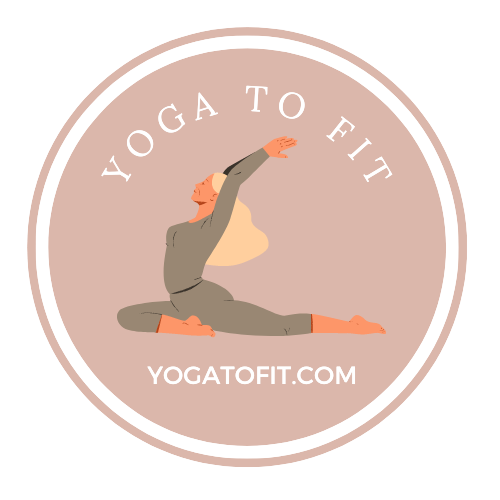Protecting Your Knees During Exercise

As we all know, doing exercise makes people healthy and fit. But to avoid any type of injury is also important while performing exercises .Here we will learn how to protect your knees during Exercise. One of the common injuries that many athletes and fitness-freak people face is the “Knee Injury“. It is hard to get up and move when you face a knee injury and this affects your healthy routine and lifestyle. Knee injury causes pain and discomfort whenever you try to move. However, you should work out or exercise in a way that does not hurt your knee or any other part of your body to prevent injuries and ensure long-term joint health.
The knee joint undergoes a lot of stress during exercise, especially in activities like running, jumping, and weightlifting. So staying physically active and maintaining a healthy body weight are the best ways to protect your knees during exercise and other joints strong and healthy. To protect your knees during exercise and avoid any kind of discomfort, pain, and long-term damage to your knees, you should protect your knees during exercise. Let’s have a look at the tips to follow during exercise or workouts in order to prevent any knee injury.
Effects of Exercises on Your Knee Joints
The impact of exercises you perform can vary depending on the type of exercise, frequency, intensity, and many other factors. Some exercises such as running and jumping can cause stress on the knees which can lead to wear and tear on the knee joints. If you are misinformed that knee-strengthening exercises affect the knee joint directly, remember that they actually strengthen the muscles surrounding it.
Remember to start warming up always with light exercise before any knee-strengthening exercises. Some of the examples of gentle exercises are walking, cycling, and many more. These light exercises put very little stress on the knees help increase blood flow to the muscles and allow them to be more flexible before performing any knee exercise.
Ways To Protect Your Knees During Exercise
Some discomforts may occur even when you are having a normal, healthy, stress-free, and good workout. But this especially happens when you are trying out new exercises without knowing the correct poses and techniques. Remember, when you experience any kind of sharp or sudden pain in your knees, stop immediately at that time because such type of pain isn’t normal. Here are the effective ways how can you protect your knees during exercise:
1. Warm-up and stretching
One of the most important steps you can take to protect your knees during exercise is to warm up and stretch properly.
- A warm-up immediately increases blood flow to your muscles and makes them more flexible and less prone to injury.
- It prepares your body for the physical activity that you’ll be performing after this warm-up.
- Spend at least 5-10 minutes doing low-intensity exercises like walking, cycling, and stretching to get your muscles warmed up.
- Focus mainly on stretching the muscles around your knees during the warm-up and maintain each stretch for 15 to 30 seconds. Stretching should be done after warming up, as cold muscles are more capable of strain.
2. Use Proper Form and Technique
Using proper form and technique is essential in protecting your knees during exercise.
- Try to perform exercises in the correct form as the incorrect form or postures can place excessive stress on your knees, leading to injuries.
- Make sure to use proper techniques and poses whether you are lifting weights individually or as a couple, doing squats, lunges, or other exercises. For example, when doing squats, keep your knees in line with your toes and avoid letting them collapse inward. Keep your back straight and chest lifted.
- Remember, when lifting weights, use your legs and not just your knees to lift. Avoid locking your knees during exercises like leg extensions, as it can strain the joint.
- If you don’t know the correct form, practice under the supervision of a certified personal trainer who can guide you and ensure that you are using the proper technique to protect your knees.
3. Gradually Increase Intensity and Duration
- Avoid switching directly to high-intensity exercises or do not suddenly increase the duration of your workouts, as it can strain your knees. Gradually increase the intensity and duration of your exercise routine to give your body time to adjust.
- If you are starting a new exercise or trying a new activity, start at a beginner level and gradually progress.
- Avoid pushing yourself too hard or overtraining, as it can increase the risk of knee injuries.
- Always listen to your body and take rest days to allow for proper recovery.
4. Wear Appropriate Footwear
- Wearing appropriate footwear along with proper clothes for exercise is important for protecting your knees during exercise.
- Shoes that fit well and provide proper support can help absorb shock and reduce the impact on your knees.
- Select footwear that is tailored to the specific type of physical activity you plan to perform. For example, running shoes are designed to provide cushioning and support for the repetitive impact of running, while cross-training shoes are more suitable for activities like weightlifting or aerobics.
- Make sure your shoes fit well and provide proper support to your feet. Replace your shoes when they are worn out or no longer provide adequate support.
5. Include Low-Impact Exercises
- High-impact exercises like running and jumping can put a lot of stress on your knees. To protect your knees during exercise, you should include low-impact exercises in your workout routine.
- Low-impact exercises include swimming, cycling, and many more.
- These low-impact exercises can provide an excellent cardiovascular workout without putting excessive stress on your knees. These exercises are gentle for your joints and can help improve your overall fitness level while reducing the risk of knee injuries.
6. Strengthen Your Muscles
- Strong muscles around your knees can help provide stability and support to prevent injuries and reduce pain caused by conditions such as osteoarthritis.
- Strong muscles throughout your body can improve your overall physical performance, enhance your ability to perform daily activities, and even increase your metabolism.
- Regular resistance training, such as weightlifting or bodyweight exercises, can help you strengthen your muscles and enjoy the benefits of improved musculoskeletal health.
Read more: What Should Men Wear during Yoga?
Some Post-Exercise Stretching
Post-exercise stretching is beneficial in lessening the injuries or pain that can be caused by the forms of exercise you performed before. It is essential to stretch the muscles after exercise or workout in order to improve flexibility in the particular muscle group for which you were doing the workout. Now, let’s see what all those post-exercise stretchings are:
1. Quadricep stretch
Performing right post-workout stretch sessions is crucial if you want to gain the benefit of your workout. Our quadriceps muscles can easily become inflamed, painful, and tight with frequent use. To perform the quad stretch:
- Hold on to the back of a chair or put one hand on a wall for balance.
- Lift one foot behind the body and grab the ankle with the hand.
- Keep the back straight and the knees close together.
- Pull the heel close to the buttocks without forcing it or causing pain.
- Hold for up to 30 seconds and then slowly lower the leg.
- Switch sides and repeat.

2. Toe Touches
To stretch the hamstrings in the back of the legs, there is one traditional approach known as toe touching.
- With the feet close together, slowly bend over at the hips and extend the arms downward. Keep the legs straight but do not lock the knees.
- Reach the fingers to the top of the toes and hold for 30 seconds.
- Initially, it may not be possible to reach the toes. In this case, try to get the fingers as close as possible to the toes without causing pain.
What to avoid:
- Do not use a bouncing motion. Hold the body still.

3. Standing Hamstring Stretch
To protect your knees during exercise, this is also one of the effective post-exercise stretching which helps in loosening or stretching the back muscles of the legs. It put less stress on the lower back as compared to the other two stretching exercises. These can be performed anywhere whether you are practicing at home or any other place.
- Stand up straight with the feet no more than shoulder-width apart.
- Bend at the hips slightly and extend the right leg out a few inches in front of the body. Allow the left leg to bend slightly.
- While keeping the back straight, slowly bring the chest downward.
- Bend down as far as possible without causing pain. Hold for 30 seconds.
- Slowly bring the leg back toward the body and stand up straight.
- Repeat with the other leg.

FAQS
Q: Why is it important to protect your knees during exercise?
A: Your knees are vulnerable to injuries during exercise due to the high impact and stress they endure. Protecting your knees can help prevent injuries such as sprains, strains, and tears, and promote overall joint health.
Q: Are there any exercises I should avoid to protect my knees?
A: Yes, some exercises can put excessive stress on your knees and increase the risk of injury. Avoid exercises such as deep squats, lunges with heavy weights, and repetitive high-impact activities like jumping or running on hard surfaces. If you have a history of knee problems or pain, consult with a healthcare professional or a certified fitness instructor to determine which exercises are safe for you.
Q: How can I modify my exercise routine to protect my knees if I have knee pain or previous knee injuries?
A: If you have knee pain or previous knee injuries, it’s important to modify your exercise routine to protect your knees. Consider low-impact exercises such as swimming, water aerobics, or using an elliptical machine. You can also try exercises that are less stressful on the knees, such as yoga or Pilates. Avoid exercises that exacerbate your knee pain and work with a healthcare professional or a certified fitness instructor to develop a safe and effective exercise plan.
Q: Can wearing knee braces or sleeves help protect knees during exercise?
A: Knee braces or sleeves may provide some support and stability to the knee joint during exercise, but they are not a substitute for proper exercise technique and form. They should be used as part of an overall knee protection plan and in consultation with a healthcare professional or a certified fitness instructor.
Conclusion
Protecting your knees during exercise is crucial to maintain joint health and prevent injuries. By following simple tips such as wearing proper footwear, using proper form, warming up and stretching, and avoiding excessive impact, you can significantly reduce the risk of knee-related problems and protect your knees during exercise.
Additionally, listening to your body and not pushing yourself beyond your limits is essential to prevent overloading your knees. Taking proactive steps to protect your knees during exercise will not only allow you to enjoy a healthy and active lifestyle but also prevent potential long-term damage to your knees.
Remember, prevention is always better than cure, so prioritize knee protection in your exercise routine for optimal joint health.
You May Also Like:
Natural Ways To Get a Slipped Disc Back In Place



